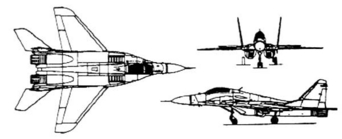
North Korean Air Force (excerpt from North Korean Military Power, here.)

The North Korean Air Force is primarily responsible for defending North Korea’s airspace and territorial integrity. Its other missions include tactical air support to KPA Ground Forces, insertion of SOF, transportation and logistics support, wartime strikes against targets in South Korea, and intelligence, surveillance, and reconnaissance. The Air Force is capable of defending North Korean airspace, with aircraft and groundbased systems but would struggle to penetrate South Korean air defenses in an attack role. North Korean air and air defense forces are organized into four air divisions (each responsible for a sector of the country) that control surface-toair missiles (SAMs), antiaircraft artillery (AAA), and air surveillance assets. The forces also control transport units and two airborne sniper brigades as well as various support elements. The air divisions control combat and transport aircraft and helicopters that operate from a large number of airfields. The air and air defense forces have about 110,000 personnel and control over 900 combat aircraft, over 300 transport aircraft, and 300 helicopters. The more modern aircraft are concentrated in and around Pyongyang, and the SAMs and AAA provide perimeter security for the country and the capital in particular. The capital has one of the most dense concentrations of AAA in the world.187 The Air Force’s most capable combat aircraft are its few MiG-29 Fulcrum fighters procured from the Soviet Union in the late 1980s, its MiG-23 Flogger interceptors, its Su-25 Frogfoot ground-attack aircraft, and its Il-28 Beagle bombers. The majority of its aircraft are much older and less capable; the Air Force is one of the only air forces in the world that still operates MiG-21s, MiG-19s, MiG-17s, and MiG-15s. The Air Force also maintains a large fleet of An-2 Colt aircraft, first produced in the 1940s, which are single-engine 10-passenger biplanes probably tasked with inserting SOF into South Korea but are also capable of supporting simple air-to-ground strike missions. The Air Force is rounded out with other Soviet-era transport aircraft, including helicopters that would be used for troop transport and limited ground attack.188 The most common North Korean ground-based air defense artillery threat to aircraft (helicopters and fixed-wing aircraft) and unmanned aerial systems is very likely manually directed AAA and man-portable air defense systems (MANPADS). Manually directed systems will have limited ability to engage smaller targets, such as UAVs, in addition to poor ability to engage all targets at night and in inclement weather.
KPA ground-based AAA probably will rely heavily on medium-caliber (30-mm to 57-mm) AAA guns. Medium-caliber AAA guns maximize firepower (a combination of rate of fire and kinetic energy) by offering some of the highest rates of fire while being large enough to have sufficient terminal ballistics and lethality characteristics. The KPA also fields numerous 14.5-mm antiaircraft machineguns and domestically produced MANPADS (SA-7, SA-14, and SA-16). North Korea operates a variety of SAMs, mostly Soviet-era systems, including the SA-2, SA-3, SA-5, and SA-13.190 Flight time for North Korean pilots reportedly is severely restricted to as few as 15–25 hours per year. Flight hours this low probably stem from fuel shortages and may reflect concern over the upkeep and maintenance of the North’s aging aircraft.191 Under these conditions, North Korean pilots most likely focus their training on simple pilot proficiency and the maintenance of basic aeronautical skills. The pilots of more advanced fighter aircraft probably fly more frequently, maintaining a higher degree of proficiency and at times participating in aerobatic competitions and demonstrations during public air shows. In September 2016, North Korea hosted its first advertised International Friendship Air Festival, at Kalma Airfield in Wonsan, where a variety of pilot drills were held and aircraft were displayed for the public.192 North Korea has probably modernized select older air defense systems in addition to introducing some newer systems. During a 2010 military parade, North Korea first displayed a new mobile SAM launcher and accompanying radar that externally resembled the Russian S-300 and Chinese HQ-9; this system was most recently tested in 2017.193 The North is also developing or procuring a variety of UAVs, some of which have been used for reconnaissance missions over South Korea and which could be equipped with rudimentary armaments.194 North Korea is probably pursuing larger UAVs for a variety of military missions.
Distraught Villager Restrained Trying to Eat Heart from Dead NK Soldier Seven Members of this Man’s Family Killed by NK Team

